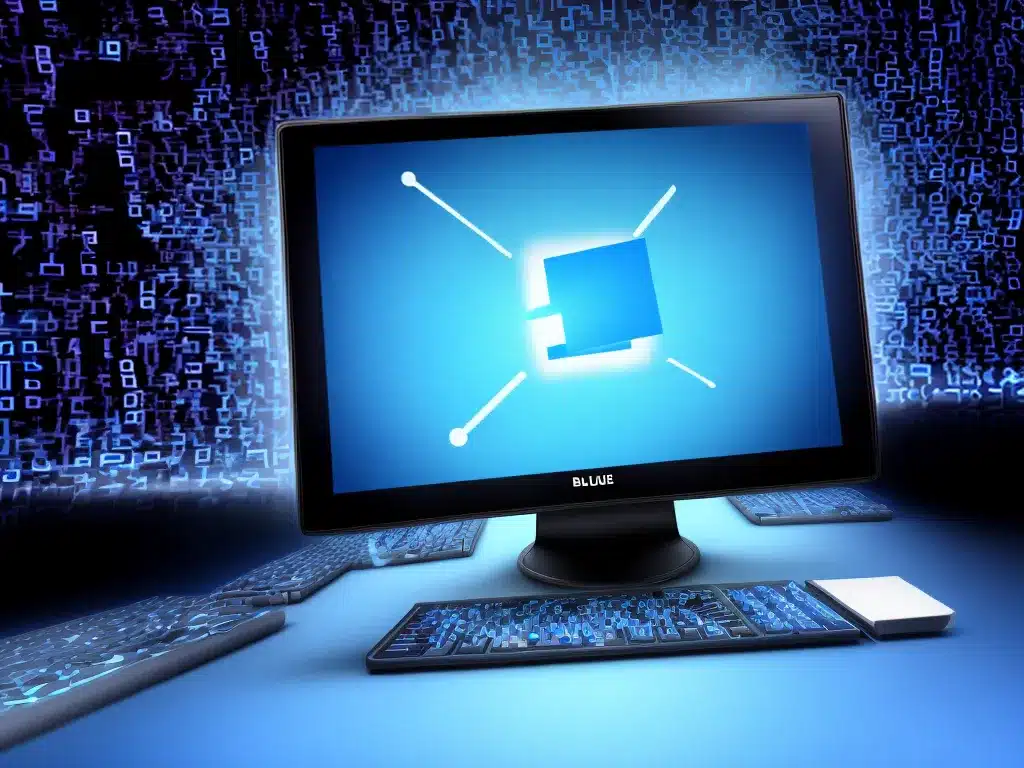The dreaded Blue Screen of Death (BSOD) can be one of the most frustrating experiences for any PC user. As a PC technician, I have helped many users troubleshoot and resolve this critical error over the years. In this article, I will provide an in-depth guide on diagnosing the root causes of the BSOD and the various solutions to fix it for good.
What Causes the Blue Screen of Death?
The Blue Screen of Death, also known as a ‘stop error’, occurs when Windows encounters a critical system error from which it cannot recover. Some common causes include:
-
Faulty hardware – Hardware issues like bad RAM, failing hard drives, buggy video cards are often the culprits behind the BSOD.
-
Driver conflicts – Incompatible, outdated, or corrupted drivers can cause system crashes and the BSOD.
-
Software issues – Problematic software, viruses, malware can crash the system with a BSOD.
-
System file corruption – Corrupted Windows system files, registry errors can lead to the BSOD.
-
Overheating – Excessive heat buildup causes system instability and crashes.
-
Memory leaks – Applications failing to release memory over time can eventually lead to the BSOD.
So in summary, both software and hardware issues can be responsible for the notorious Blue Screen of Death.
Troubleshooting the Blue Screen of Death
When the BSOD occurs, the first step is to diagnose the error message displayed and identify the root cause. Here is a systematic approach to troubleshoot the BSOD:
Examine the Error Message
The BSOD will display a stop error code along with some technical details of where the error occurred. Examples include:
- PAGE_FAULT_IN_NONPAGED_AREA
- IRQL_NOT_LESS_OR_EQUAL
- KMODE_EXCEPTION_NOT_HANDLED
Make a note of the full error message. This stop code gives you a clue on what might be causing the error.
Analyze the Crash Dump Files
Windows automatically generates crash dump files after a BSOD which contains diagnostic information about the error. View the dump files under C:\Windows\Minidump to identify the driver or process responsible.
Check the System Logs
The system event viewer logs contain detailed error events that can point to the failure. Look under Windows Logs > System to find BSOD events. Match the log time stamps with your crash times.
Stress Test Hardware
Use hardware diagnostics tools like Memtest86+ to stress test the RAM for errors. Test your storage drives using the SeaTools utility. This can reveal faulty hardware components.
By pinpointing the offending driver, software or hardware component causing the BSOD, you can zero in on the appropriate fix.
Fixing the Blue Screen of Death
Once the root cause is found, here are some common solutions to stop the BSOD crashes for good:
Update Faulty Device Drivers
If the BSOD was triggered by a problematic device driver, update to the latest driver from the OEM website. Make sure the driver is digitally signed and compatible with your OS version.
Uninstall Problematic Software
If a particular application is causing system crashes, uninstall and remove all traces of the software. Reinstall a fresh copy after deleting the app data folder.
Scan and Clean Viruses
Viruses and malware are common causes of system file corruption and BSODs. Scan your system with antivirus software like Malwarebytes to remove any infections.
Replace Defective Hardware
For BSODs triggered by failing hardware components like bad RAM, hard disks, replace the faulty component with a new one.
Restore Corrupted System Files
Use the System File Checker tool to scan Windows system files and restore any corrupted files:
sfc /scannow
Update Windows and Firmware
Install the latest Windows updates, patches, hotfixes which contain fixes for BSOD causing bugs. Also update motherboard, BIOS/UEFI firmware to the newest version.
With rigorous troubleshooting and applying the right fix, you can successfully troubleshoot and get rid of those pesky BSOD crashes for good. Being able to quickly diagnose those cryptic stop errors will save you countless headaches.
Preventing Blue Screen of Death Errors
Here are some best practices you can follow to avoid those irritating Blue Screen crashes:
-
Update Windows – Keep Windows updated with latest patches and hotfixes.
-
Update device drivers – Maintain up-to-date drivers for hardware components. Avoid incompatible drivers.
-
Use reputable software – Install only stable, trusted software to avoid system crashes.
-
Regular backups – Keep regular backups of your data in case of system crashes.
-
Use antivirus software – Scan regularly to prevent malware infections that can lead to BSODs.
-
Clean dust – Clean computer dust buildup to prevent overheating related crashes.
-
Monitor temperatures – Use software to monitor component temps. Overheating can cause BSODs.
-
Tweak configuration – Disable overclocks if unstable. Adjust virtual memory if needed.
Following this prevention checklist will help minimize the occurrences of frustrating Blue Screen errors. Quick troubleshooting and analysis of crash dump files can help identify and remedy the source of the problems.













